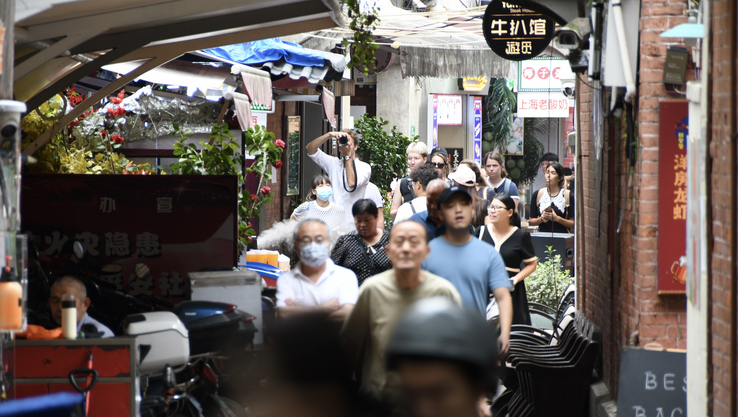P5/O5 Shanghai Excursion
The P5/O5 studio, supervised by Wenwen Sun and Roel Wolters, brings students to a special project and location: Shanghai, China. With the theme “transcultural urbanism and public space in the future global city”, ten students from three disciplines went to explore the Yangpu waterfront located in the north of Shanghai’s central city. This former industrial district is being transformed into a strategic site with attractive waterfront as part of the “Shanghai 2035 master plan: striving for an excellent global city.” With the common goal of re-envisioning urbanism and public space while embracing the cultural exchanges between West and East, the students probed into the project site with their particular research themes and goals, critically positioning themselves vis-à-vis the phenomenon and discourse of the global city.
To some, global city means negotiating urban development with the local cultural context, as they focus on local urban typologies such as the Lilong alleyway houses and neighborhoods; Whereas others searched for a renewed understanding of human-nature relations, water safety, seeking inspirations from the traditional Chinese garden or water towns and their ecological patterns. Moreover, some targeted emerging social and societal problems in the globalizing urban development, such as segregation, gentrification, and inequality. This position has led to several other interesting topics as social integration of public space, female inclusive city, and affordable housing.
The program of this excursion did not stop at the site visit. Students also explored various types of projects and urban areas, both at the waterfront and inner city, historical and modern, witnessing massive transformations, contrast, and socio-spatial dynamics that characterize this Chinese mega city. At Shanghai Urban Planning Exhibition Center, students gained significant insights on the urban planning history and crucial urban development projects in Shanghai, which greatly contributed to their understanding of the context from a professional point of view. The trip delightfully finished with a walking tour in Jing’an District, the formal French concession, guided by Roel’s colleagues from the local landscape architecture firm, EADG.
